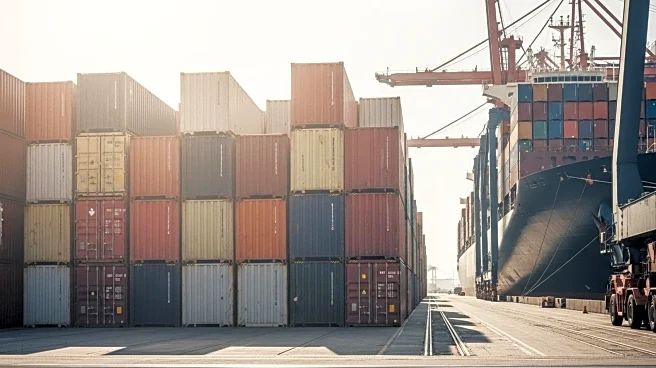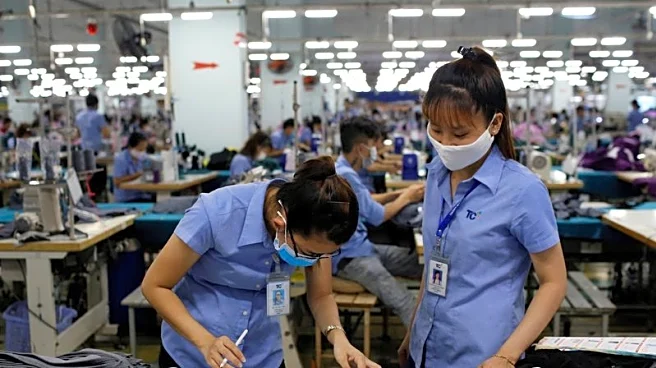What's Happening?
American Eagle Outfitters is taking significant steps to mitigate the impact of U.S. tariffs, aiming to reduce these costs by over 60% by early 2026. The company's strategy includes price adjustments, negotiating supplier costs, optimizing transport methods, and shifting manufacturing away from countries with higher U.S. levies. Executive Chairman and CEO Jay Schottenstein highlighted the success of these early efforts during a recent earnings call. The company projects $70 million in tariff costs for the latter half of the current fiscal year, a substantial reduction from the $180 million it would have faced without these measures. American Eagle plans to further decrease its manufacturing presence in China and Vietnam, countries currently facing high U.S. import taxes.
Why It's Important?
The strategic measures taken by American Eagle are crucial in navigating the challenging landscape of increased tariffs imposed by the Trump administration. By reducing dependency on countries with high tariffs, the company aims to maintain its competitive edge and protect its profit margins. This approach not only benefits American Eagle but also sets a precedent for other retailers facing similar challenges. The reduction in tariff costs can lead to more stable pricing for consumers and potentially increase the company's market share. Additionally, these efforts reflect broader industry trends where companies are reevaluating their supply chains to mitigate geopolitical risks.
What's Next?
American Eagle's ongoing supply chain optimization plan is expected to continue influencing its manufacturing and sourcing decisions. The company is focused on reducing its reliance on China and Vietnam, aiming for a low single-digit percentage of manufacturing from these countries by the second half of the year. This shift may lead to increased partnerships with manufacturers in other regions, potentially altering global apparel production dynamics. As the company implements its three-year growth strategy announced in March 2024, stakeholders will be watching closely to see how these changes impact American Eagle's financial performance and market positioning.
Beyond the Headlines
The strategic shift by American Eagle highlights the broader implications of global trade policies on U.S. businesses. As companies adapt to changing tariff landscapes, there may be long-term shifts in global manufacturing hubs, impacting labor markets and economic conditions in affected regions. Additionally, the focus on supply chain optimization underscores the importance of agility and resilience in business operations, which could lead to innovations in logistics and sourcing practices across the industry.











